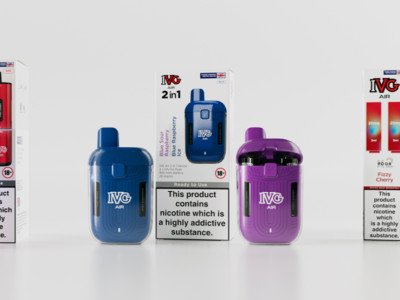Researchers from the University of Louisville's Tobacco Regulation and Addiction Centre carried out a study focussing on (what they claim to be) new and old style e-cigarette cartridges. In reality, they used poor performing cigalikes and antiquated Evod atomisers combined with a practically Jurassic iTaste variable voltage mod.
It has been pointed out to researchers looking at aldehydes, time and again, that production of the toxins are only achieved under dry burn conditions. Such conditions are exacerbated by basic equipment being pushed beyond its limits – and the ability for a vaper to vape comfortably. But then, maybe the team simply wanted to produce aldehyde traces?
The vapour they wished to measure was produced by generating puffs of 4 seconds in duration, ten puffs in total, for each sample. The team justified this by citing two studies they claim state that this represents normal vaping. Any vaper will read this and laugh – because it most certainly doesn’t reflect normal, successful vaping practised by the majority. For a start, the atomisers in this study can’t wick efficiently with a 4 second draw, and will quickly enter a state of dry burning. The first study cited used unrepresentative equipment, while Louisville’s researchers failed to link the actual third generation products used in the second study to what they were using in their lab.
Next, the research team chose to test the Evod at four voltage settings, three of which fall well outside its ability to cope: 11.7 W (4.2 V), 14.7 W (4.7 V), and 16.6 W (5.0 V). For some reason, they quote the power value first, but experienced vapers will also appreciate that variable voltage devices produced a much harsher vape than the later variable wattage ones – could this be a further attempt of the team to obfuscate their hidden agenda?
What the team deduced was that battery power was linked to aldehyde production – an utter nonsense of a conclusion that led them to worry about modern devices with power outputs far in excess of the ancient devices they used. It demonstrates a clear lack of understanding of the subject matter and makes a mockery of the scientific process. Rather than learn from the mistakes of those who have gone before, the team from Louisville have done nothing more than recreate them and obtained similar irrelevant results.
They claim: “The emission of aldehydes including acrolein, acetaldehyde, and formaldehyde in aerosols of e-cigarettes as measured in this study supports the need to maintain an appropriate level of concern over active and passive exposures to harmful emissions of e-cigarettes and calls for more research on the newer-generation e-cigarettes and their potentially harmful effects.”
We say: Mumiye Ogunwale, Mingxiao Li, Mandapati Ramakrishnam Raju, Yizheng Chen, Michael Nantz, Daniel Conklin, and Xiao-An Fu need to be schooled in how vaping devices are actually used before being allowed near a lab again.
In 2015, Professor Peter Hajek, director of the Tobacco Dependence Research Unit at Barts and The London School of Medicine and Dentistry, UK, commented on a similar study: “These findings emphasise the importance of making clear the conditions in which tests of this kind are undertaken and avoiding sweeping assertions that can mislead the public. Vapers are not exposed to dangerous levels of aldehydes. My reading of the evidence is that e-cigarettes are at least 95% safer than smoking. Smokers should be encouraged to switch to vaping.”
Photo Credit:
Tables from the study
Dave Cross
Journalist at POTVDave is a freelance writer; with articles on music, motorbikes, football, pop-science, vaping and tobacco harm reduction in Sounds, Melody Maker, UBG, AWoL, Bike, When Saturday Comes, Vape News Magazine, and syndicated across the Johnston Press group. He was published in an anthology of “Greatest Football Writing”, but still believes this was a mistake. Dave contributes sketches to comedy shows and used to co-host a radio sketch show. He’s worked with numerous vape companies to develop content for their websites.
Join the discussion
Parliament Fears Two
The Department for Environment, Food and Rural Affairs faced questions from a Conservative MP and, oddly, a member of the Department for Environment, Food and Rural Affairs
Harm Reduction For The Rich
The United Kingdom risks becoming a harm reduction country only for the wealthy, according to Michael Landl of the World Vapers’ Alliance
Sacrificing Health For 2p Cut
Tory Government alienates vaping voters with its mission to cut tax by an unaffordable 2p to attract voters by placing a tax on vape products in the forthcoming budget
Scotland Announces Single-Use Vape Action
A ban on the sale and supply of single-use vapes in Scotland is due to come into effect on 1 April 2025, under proposed legislation published today












